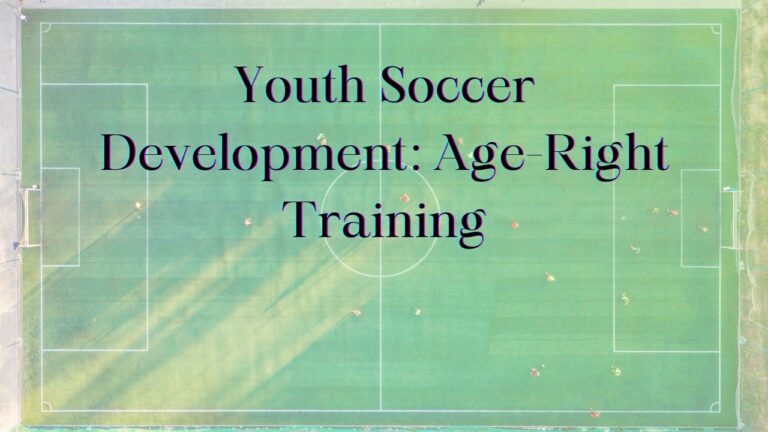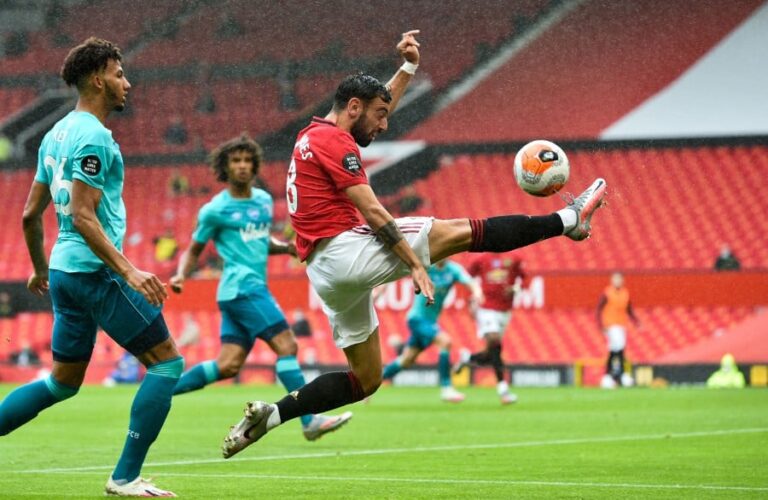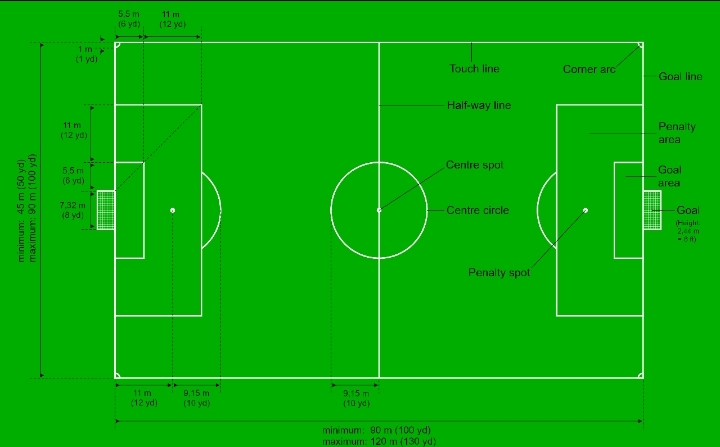Soccer is a game of tactics and strategies. The formations and styles of play that coaches employ can often determine the outcome of a match. Knowing how to utilize different formations for attacking and defensive purposes is a vital skill for players and coaches alike.
In this blog post, we will explore some of the most common and effective soccer tactics and formations used in the modern game. Whether you are a player looking to better understand tactics or a coach seeking new ideas, this guide will provide you with the ultimate overview of how to strategically align your team’s strengths on the pitch.
From key attacking shapes like the 4-3-3 to ultra-defensive systems such as 5-4-1, we will cover everything you need to know about soccer tactics and formations. Let’s kick off!
Why Soccer Tactics and Formations Matter
Implementing purposeful tactics and formations is crucial in soccer for several reasons:
- Provides structure: Tactics give players clear roles and responsibilities on the pitch. Formations allow players to understand spacing and shape. This organization is the foundation of an effective game plan.
- Gameplans to exploit weaknesses: The right tactics allow coaches to analyze opponents and develop gameplans that target specific weaknesses. Tactics enable teams to play to their strengths.
- Better chance of winning: Statistics show teams who strategically implement formations and tactics win more games. They create more chances, allow fewer goals, and control matches.
- Player development: Training players in different formations and tactical plans allows them to become more complete and versatile. This helps create talent depth on a squad.
- Psychology: Tactics give teams a formula to follow. This belief in the system provides confidence and focus for the players.
The bottom line is that tactics and formations are an essential part of successful soccer. Teams who fail to implement cohesive and purposeful shapes and gameplans will struggle to control matches and consistently cannot win games.
Key Attacking Formations in Soccer
When looking to go on the attack, here are some of the most popular and effective formations used in soccer:
4-3-3 Formation
The 4-3-3 is one of the most common attacking formations in the modern game. It consists of four defenders, three midfielders, and three forwards.
- Very balanced shape between attack and defense. Provides width in attack with advanced wingers.
- Three central midfielders allow for possession and creativity. Deep lying midfielder pivots on defense.
- Three forwards can stretch defenses. False nine drops deep to link play. Wingers provide crossing options.
Used by teams like Liverpool, Barcelona, Ajax, and the Netherlands national teams.
4-4-2 Formation
The 4-4-2 is another classic attacking formation. It utilizes four defenders, four midfielders, and two strikers.
- The balanced formation provides width in attack with wide midfielders. Two central midfielders control play.
- Two strikers work off each other. Can play small/quick or target forwards based on personnel.
- Fullbacks provide overlapping runs and width. Central midfielders join the attack.
England historically used 4-4-2. Also utilized by teams like Atlético Madrid.
3-5-2 Formation
The 3-5-2 is an ultra-attacking shape with only three defenders.
- Heavy emphasis on attack with five midfielders pushing forward.
- Two strikers offer threats in central areas in front of the goal.
- Wingbacks provide width in attack down the flanks.
- Requires disciplined defensive midfielders and center backs.
Juventus and Chelsea have used the 3-5-2 to great success.
Common Defensive Formations
When the priority is defending, these are some of the most common formations:
4-5-1 Formation
The 4-5-1 is a very defensive-minded formation utilizing four defenders and five midfielders.
- Two banks of four defenders and midfielders stay compact and deep.
- Defensive midfielders protect the back four and prevent central attacks.
- Fullbacks rarely advance and provide width.
- Single strikers are often left isolated, mainly focused on counterattacks.
Used frequently against superior attacking opponents.
5-4-1 Formation
The 5-4-1 is an extremely defensive formation using five defenders.
- Five defenders across the backline with little attacking width.
- Four midfielders congest central areas and defend the zone.
- Defensive, deep block setup aims to frustrate opponents.
- The single striker has little support, only outlet on counters.
Used by weaker teams looking to “park the bus.”
3-4-3 Formation
The 3-4-3 formation provides density in defense with three center backs.
- Three central defenders for additional solidity at the back.
- Four midfielders balance the shape and defend zones.
- Three forwards able to quickly counterattack.
- Wingbacks provide width in attack when able to advance.
Antonio Conte has used 3-4-3 to great effect at Chelsea.
How to Choose the Right Formation
Choosing the optimal formation and tactical shape for your team involves several considerations:
- Analyze Your Team’s Strengths/Weaknesses: Play to your strengths and look to minimize weaknesses. Use a shape that fits your personnel.
- Study Your Opponent: Scout opponents and identify weaknesses or areas you can exploit. Select tactics to target those vulnerabilities.
- Factor in Field Conditions/Weather: Wider shapes work on bigger fields. Compactness helps in rain or wind. Adjust accordingly.
- Game Circumstances: Be flexible in adapting shapes based on the scoreline or phases of the match. More attackers when seeking goals or defenders when holding a lead.
- Variety and Unpredictability: Varying formations between and during games keeps opponents guessing. Don’t be predictable.
- Personnel Available: Injuries, suspensions, etc. may force changes in shape and personnel so have backup plan plans.
- Comfort Level of Players: Shapes that players are familiar and comfortable with tend to be more effective.
- Control and Balance: Formations shouldn’t be too attacking or defensive. Strive for control and balance on both ends.
The keys are analyzing all factors and choosing the optimal tactics and system for each specific match and scenario. Be open-minded and flexible in your approach.
How to Train Tactics and Formations
For players and teams to truly excel at different formations and styles of play, structured and deliberate training is crucial:
- Positioning Exercises: Drills focused on shape, spacing, zones, roles, and responsibilities within each formation.
- Scrimmage: Small-sided games using specific formations. Stop and make adjustments. Progress to full field.
- Video Analysis: Use video to study tactics and identify areas needing improvement after matches and training.
- Focus and Repetition: Training time dedicated to tactics and formations. Repetition creates familiarity.
- Communication: Constant communication between players on the field. Verbalize shape responsibilities.
- Hybrid Formations: Practice transitioning between multiple shapes during games.
- Quick Decision Making: Drills to sharpen the speed of tactical decisions and reaction time.
- Variable Settings: Vary drills and scenarios to build flexibility – different opponents, environments, scorelines.
- Simple and Clear: Tactical plans should be simple, clear roles. Players must understand expectations.
Dedicated, purposeful training sessions focused on tactics are the key to effectively implementing formations and game plans. Quality repetition establishes chemistry, confidence, and comprehension.
Conclusion
Implementing purposeful tactics and formations can make or break a team’s success on the soccer pitch. While talent is critical, proper alignment of a team’s strengths through cohesive formations and styles of play is equally vital.
As we covered, some of the most common and effective tactical shapes include the 4-3-3, 4-4-2, 3-5-2, 4-5-1, and more. The keys are analyzing your personnel, opponents, and other variables to select optimal tactics.
Dedicated training for repetition, chemistry, and flexibility in formations is crucial as well. At the end of the day, soccer is a tactical battle. Implementing smart, cohesive game plans gives your team the best chance to outsmart opponents and win more matches.
Read More: Goalkeeper Techniques and Positioning for Success in Soccer







